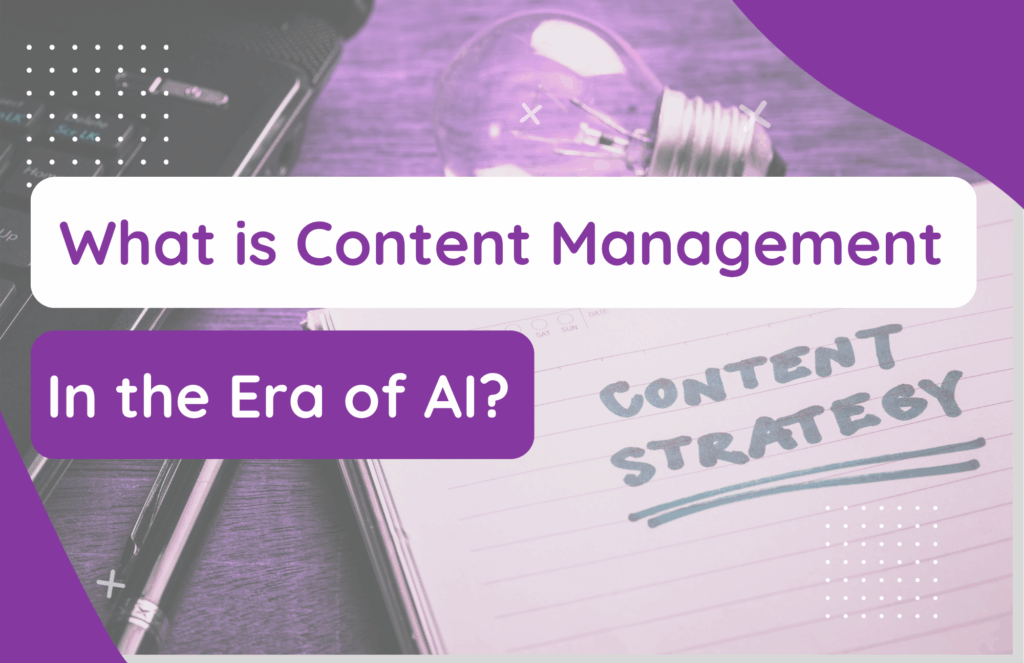A digital employee experience (DEX) has become crucial to daily workflows. But what exactly is DEX? At its core, DEX refers to the quality of employees’ interactions with the tools, platforms, and technologies you give them. It encompasses everything from your intranet’s usability to the effectiveness of your software applications.
The digital employee experience framework helps you ensure the digital aspect of employees’ work lives is smooth, efficient, and satisfying. Software and virtual tools were once simply part of the overall employee experience. However, that’s no longer the case.
In today’s business environment, digital interactions make up a large enough percentage of daily work that you must proactively seek to create a great DEX. Here’s everything you need to know about this increasingly important business concept.
Why Is the Digital Employee Experience Important?
Digital employee experience initiatives emerged in response to the growing reliance on virtual tools in the modern workplace. If your tools are intuitive and responsive, they can drastically improve efficiency and job satisfaction. In contrast, a poor DEX (much like a bad employee experience) can lead to friction, frustration, and attrition.
It’s helpful to look at a simple example. If your software is slow and prone to glitches, it can put unnecessary stress on your team and hinder their ability to perform tasks efficiently. They may dread completing projects on that platform and even procrastinate certain aspects of work to avoid the headaches of using the clunky application.
On the other hand, when digital tools work seamlessly and are enjoyable to use, team members are more likely to feel engaged and satisfied. That’s the basic premise of DEX. Your applications and software solutions should complement one another to make life easier for your team and foster a holistic experience.
Prioritizing digital employee experience (DEX) is vital for your business. A great DEX can boost engagement, retention, and overall performance. This should come as no surprise—if employees enjoy using the tools you’ve provided, they will embrace them to get more done.
Strategies for Improving DEX
Much like company culture, DEX isn’t a set-it-and-forget-it principle. You’ve got to continually work to improve the digital employee experience through ongoing training, investments, and encouragement. Here are a few tactics you can use to create virtual ecosystems your team will love:
Talk to Your Team
Have you ever asked yourself, “Does my team even like the tech tools we’ve provided?” Admittedly, you can’t please everyone. There will always be people who prefer specific tools and applications over others. However, you can (and should) ask your staff what they do and don’t like about your current tech.
Regularly solicit feedback from your staff about the digital tools they use. You can gather information via surveys, focus groups, or one-on-one meetings. Talking to your team before making any significant tech investments is essential.
See what they like about your existing solutions and what new features would make their lives easier. Gather insights from people at various levels of the organization, too. Each group and department will provide unique insights about what tools and features you need.
Adopt User-Centered Design Principles
Many top tech tools offer customization options that allow you to tailor the layout and tool placement to align with your company’s preferences. You can also integrate multiple apps, creating a more cohesive experience overall.
Keeping the user at the center of all these choices is important. Consider how certain layouts and customizations will affect your team’s experience with the programs. Even seemingly minor layout and design edits can have an impact. Thus, it’s important to make sure that all those decisions are for the good of your team.
Offer Ongoing Training and Support
Your employees have numerous responsibilities on their plates. As such, they may struggle to take on new responsibilities, change the way they work, and take the time to familiarize themselves with the innovative tech you’ve provided them with.
Mitigating change resistance by offering your staff ongoing training and support. Teach them to use the tools you invest in, but don’t overload them with a single training session. Instead, break content into digestible chunks and periodically remind your team of all the excellent features your applications offer.
Invest in Intranet Enhancements
A well-designed intranet can be a cornerstone of a positive digital employee experience. Modern intranets should be intuitive, easy to navigate, and integrated with other tools and platforms your team uses daily.
Evaluate the efficacy of your current intranet and see whether it is still meeting your team’s needs. If it’s not, ditch your legacy tech for an elegant, cloud-based option like hubley.
Overhauling your intranet is a great way to improve DEX and collaboration. Your team can use the intranet to work together, exchange ideas, and communicate.
Modern platforms also integrate with core business tools like email, project management apps, and other solutions. This single-pane-of-glass view gives your staff a holistic look at the company’s tech stack.
Promote Digital Wellbeing
Business tools are meant to make each worker’s life a little easier. However, those tools and apps can become overwhelming. That’s another reason you must make digital wellbeing a part of your DEX strategy. Doing so helps you consider how adopting new software applications will impact your team.
You don’t want workers to be overloaded with technology. If they have to bounce between a half-dozen different apps to complete a relatively simple task, it’s a sign you need to streamline your digital workflows.
The Role of Technology in Improving DEX
Cumulatively, your business’s tech tools form the digital ecosystem in which your team will work. Each of these solutions provides a piece of the puzzle. The right tech will enhance communication, collaboration, and productivity, creating a more efficient and satisfying work environment.
However, a single clunky application can diminish DEX. Here are some of the key technologies you’ll need to invest in to reshape the digital employee experience:
- Collaboration Tools: Direct messengers and video conference solutions streamline information sharing
- Project Management Software: Apps like Asana, Trello, or ClickUp can help everyone stay organized
- AI and Automation: Automation reduces the number of redundant tasks your team must complete
- Cloud Services: Cloud-based platforms like Microsoft 365 and Google Workspace promote information-sharing
- Intranet: An Intranet like hubley provides a unified place for your team to collaborate and connect
An intranet solution can integrate all your other tech tools into a consolidated ecosystem. How does it do this? Below, we will outline the value a great intranet can offer.
How Intranet Impacts Digital Employee Experience
An intranet can help you improve your DEX in numerous ways. Here are some key examples:
Allows Users to Access Every App
You’ll be able to grant team members access to every app through the single sign-on capabilities of an intranet like hubley. This tech simplifies accessing software while enabling employees to save time and avoid redundant login processes.
Imagine how frustrating it is for your team when they have to log into six or seven different applications every day. Single sign-on eliminates this point of friction.
Provides Powerful Search Capabilities
The hubley platform makes it easy for your team to search for and find valuable information. You can create separate tabs to grant access to your directory, documents, tools, and workspaces. Increasing resource visibility encourages your team members to take advantage of the tools and assets you provide them.
Intranets offer search capabilities that eliminate irritating daily tasks like “hunt the spreadsheet.” They also ensure that your team won’t waste precious time tracking down obscure contact details for members in other departments. Within minutes, they can find their needed resources and return to business.
Promotes Collaboration and Information-Sharing
Intranets facilitate better communication by providing a platform for company announcements, updates, and social interactions. Improved communication ensures that your staff is always informed and can easily connect with colleagues.
By integrating your intranet with your email and project management tools, you can ensure your team never misses an important deadline again. They will have real-time visibility into upcoming project milestones and can put their foot on the gas to complete critical deliverables.
Intranets don’t just connect people within the same department, though. These dynamic platforms are also beneficial for forming connections across departments and business locations. Your team can seamlessly collaborate and share information whether their coworkers are down the hall or across the country.
Facilitates Gamified Work
Gamification involves making work more fun and less stressful by using badges, point systems, completeness gauges, or other visualization tools. It can encourage healthy competition between employees and create a healthier workplace culture.
Gamified work can also be the basis for reward and recognition programs. For example, you could convert customer satisfaction into a points-based tracking system and measure each person’s score throughout the quarter. The winning person or shift can receive a reward, such as a gift card, an extra day off, or some other perk.
Centralizes Key Services
An excellent intranet solution like hubley makes life much easier for new employees. You can centralize critical services and resources, which will help simplify onboarding. New hires won’t have to spend weeks learning where each app or tool is located; they can familiarize themselves with your single intranet.
They can shift their attention to becoming valuable team members after they’ve gotten to know the awesome digital workspace you’ve created. Reducing the learning curve for your new employees can also help decrease stress and improve retention.
Starting any new job can be stressful. A great digital employee experience makes this journey much less challenging.
How to Measure Improvements in Digital Employee Experience
Your company’s DEX is composed of different technologies and application interactions. Likewise, measuring DEX improvements requires a multifaceted approach.
Employee surveys will form the foundation of your analysis. Regularly gather feedback from your staff to see how they like the new tools and processes you’ve implemented. When doing so, focus on usability, efficiency, and overall satisfaction.
You’ll also need to analyze usage data from your digital tools and platforms. If you’ve successfully improved DEX, usage rates should be trending upward. Conversely, suppose you notice a drop in usage. In that case, it’s a sign that a recent change may have negatively impacted the user experience and made an application more tedious to interface with.
We also suggest monitoring support tickets. A decrease in support requests indicates that your tools are becoming more user-friendly.
Lastly, look at big-picture performance metrics. A good DEX will translate to tangible business improvements, like higher customer satisfaction, increased response times, and better project completion rates.
Elevate the Digital Employee Experience with hubley
The quality of the digital employee experience hinges on the capabilities of your technology tools. Without the right tech, you can’t create great virtual spaces.
Enter hubley, a leading intranet solution that allows you to provide your team with an engaging and immersive workspace. It readily integrates with popular business apps and will help your team collaborate, communicate, and produce results.
Do you want to learn more about hubley and its extensive list of features? Request a demo and see why leading businesses build their digital employee experience around hubley.









